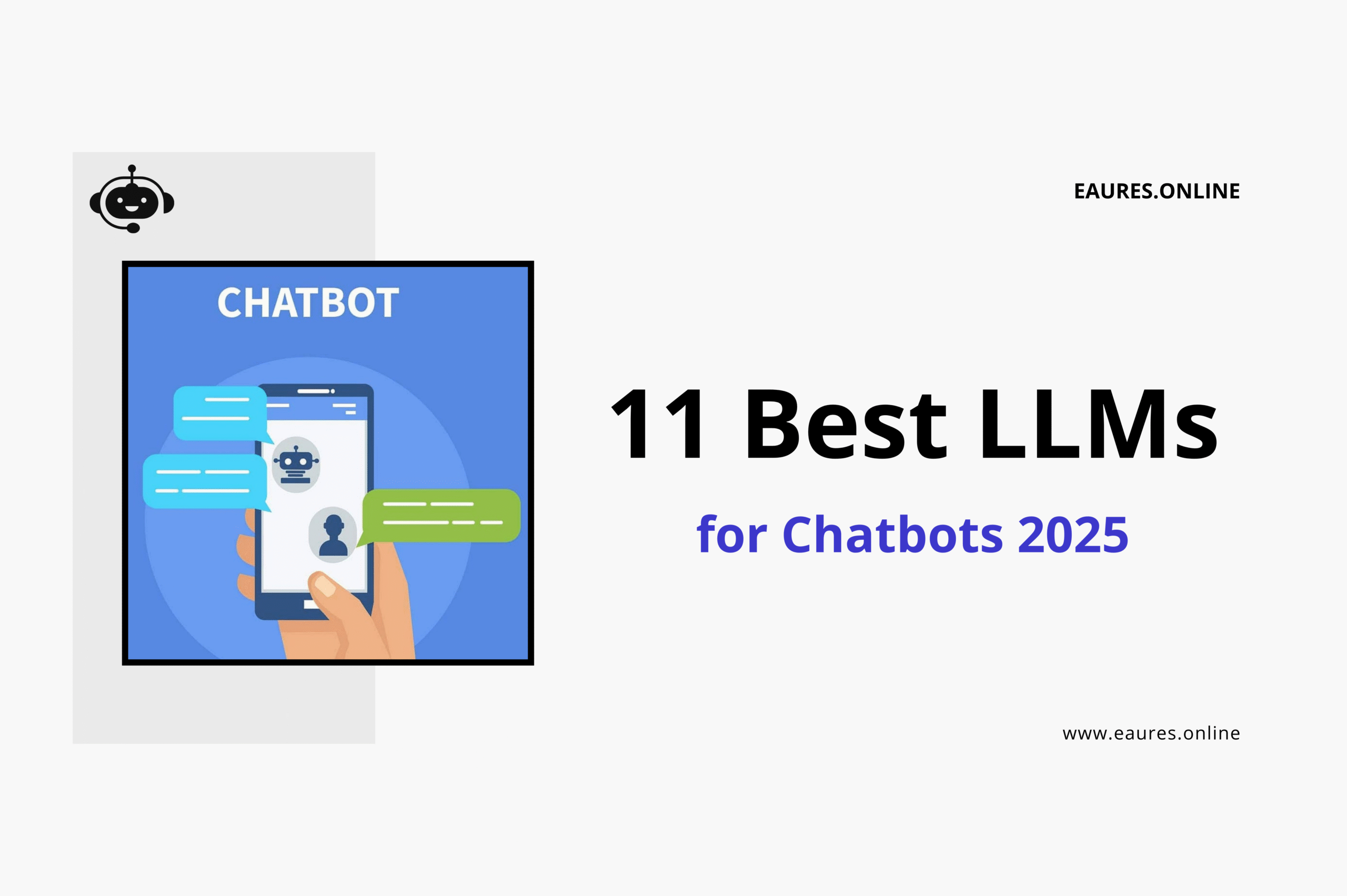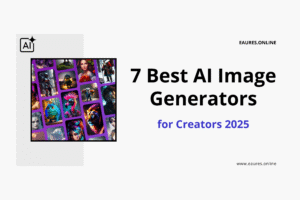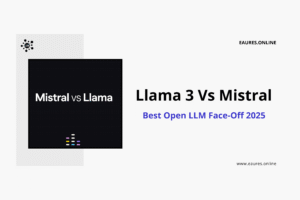Table of Contents
11 Best LLMs for Chatbots 2025
Why this 2025 guide to the Best LLMs for Chatbots matters
Chatbots are no longer simple FAQ widgets. In 2025, the most effective assistants reason over long documents, call tools and APIs, search the web, understand images, and maintain user‑safe behavior. Selecting the Best LLMs for Chatbots now means balancing quality, latency, cost, context length, safety, and integration options—plus choosing between closed (hosted) and open‑weights models you can run privately.
This guide curates 11 outstanding LLMs—each strong for particular goals, from enterprise governance to cost‑efficient self‑hosting. You’ll also find quick selection tips, deployment patterns, and links to dependable documentation so you can move from shortlist to shipping chatbot.
How to evaluate the Best LLMs for Chatbots in 2025
Before we dive into the models, align on a repeatable way to judge them. A simple framework:
Core evaluation pillars
- Answer quality & reasoning. Check instruction following, factuality, multi‑step reasoning, code/tool use, and multilingual competence. To avoid guesswork, use a reproducible approach to benchmark LLMs across quality, cost, latency, and safety with the same prompts and datasets.
- Latency & throughput. For live chat, p95 latency is often more important than mean. Streaming matters for perceived speed.
- Context window. Long context allows richer chat history and larger knowledge injections (RAG). Some models now accept million‑token contexts and structured outputs for safe automation; see Google’s docs on long context and structured JSON responses.
- Function/tool calling. Native tool use (functions, actions) is critical to connect chatbots with search, databases, CRMs, and ticketing systems.
- Safety & governance. Prefer models with robust filters, system‑prompt controls, and model‑side safety tooling (e.g., Llama Guard for open models).
- Cost & licensing. Closed APIs charge per token; open‑weights models shift cost to infra but can lower unit economics at scale. Verify license terms for your industry and region.
- Ecosystem fit. Evaluate SDKs, cloud availability, monitoring, and MLOps support.
Build patterns that raise real‑world quality
- RAG done right. Retrieval reduces hallucinations by grounding answers. A well‑tuned retriever and output schemas are as important as the model.
- Tool‑using agents. For complex workflows, structured tool calls keep chats predictable.
- Prompt architecture. Use clear system instructions, guardrails, and evaluation. If you’re new to rigorous prompting, learn the 7C framework in this guide to the strongest prompts for LLMs.
- Templates for speed. Ship faster with production‑grade stacks; for example, these LangChain templates for LLMs cover RAG, agents, and observability from day one.
- Continuous evaluation. Keep measuring with hold‑out tasks, human review, and real user feedback loops.

The 11 Best LLMs for Chatbots in 2025
Below are the stand‑out options. Each profile covers fit, strengths, cautions, and when to choose it over close alternatives.
1) OpenAI GPT‑5 (flagship, general‑purpose)
Why it’s on this list: OpenAI’s most capable general model, designed for deeper reasoning with developer controls that let you tune verbosity, reasoning effort, and tool interactions—ideal for sophisticated chatbots that blend conversation with orchestration. OpenAI’s announcement for developers details new API features such as a verbosity control and custom tools that accept free‑form schema, helpful for complex tool stacks in chat. See the official note on introducing GPT‑5 for developers.
Strengths for chatbots
- High instruction‑following fidelity and agentic task performance.
- Robust function calling and strong grounding with structured outputs.
- Broad ecosystem support across clouds and SDKs; Azure integration lists GPT‑5 within its reasoning lineup.
Consider if you need: The absolute best general quality for enterprise chat, advanced tool use, or an “AI concierge” that handles diverse tasks with reliability. If your use case is predominantly reasoning‑heavy with controlled costs, also examine OpenAI’s o3 / o4‑mini family for optimized thinking vs. speed trade‑offs (see the o3 and o4‑mini system card).
2) Anthropic Claude (Opus 4.1 / Sonnet 4): safety‑first & long‑context
Why it’s on this list: Claude’s 2025 lineup prioritizes safe, aligned outputs, long context, and strong code/tool use. The models overview documents today’s family, including Opus 4.1 and Sonnet 4 with support for extended context (Sonnet 4 offers 1M tokens in beta). For agentic UIs, Anthropic’s “computer use” feature expands automation in controlled environments. See the Claude models overview and the computer use release.
Strengths for chatbots
- Leading safety controls and refusal handling.
- Long‑context analysis and balanced latency.
- Popular in regulated industries due to risk posture.
Consider if you need: An enterprise chatbot that must default to caution, provide consistent tone, and handle very long documents with composure.
3) Google Gemini 2.5 Pro: long‑context, multimodal, structured outputs
Why it’s on this list: Gemini’s API offers million‑token contexts, multimodal inputs, and JSON‑constrained outputs—excellent for chatbots that must read long PDFs, diagrams, or logs, then trigger precise downstream actions. Explore the Gemini models page and long‑context docs for details.
Strengths for chatbots
- Handles mixed text+image inputs; supports large context tasks.
- “Thinking” capabilities are enabled in the 2.5 family by default, which can raise answer quality in complex flows.
- Mature JSON output options, simplifying tool pipelines.
Consider if you need: A Best LLMs for Chatbots pick for documentation‑heavy workloads, multimodal troubleshooting, or analytics assistants that must return precise JSON.
4) Meta Llama 3.1 (8B/70B/405B, open weights): private & customizable
Why it’s on this list: Llama 3.1 offers capable chat‑tuned variants you can run privately, with multilingual support and Llama Guard 3 safety tooling. Official model cards document 8B, 70B, and 405B sizes—an attractive spectrum for local deployment and cost control. See the Llama‑3.1‑70B‑Instruct model card and Meta’s responsible‑use guidance that references Llama Guard 3.
Strengths for chatbots
- Open weights for self‑hosting with fine‑tuning options.
- Strong safety stack via Llama Guard 3; broad community tooling.
- Scales from edge‑friendly 8B to 405B for high‑quality on‑prem workloads.
Consider if you need: The Best LLMs for Chatbots pick when data locality or strict governance out‑weighs the convenience of closed APIs.
5) Mistral Large 2: nimble, European, and strong at functions
Why it’s on this list: Mistral’s latest flagship emphasizes improved coding, math, multilinguality, and advanced function calling—good ingredients for crisp, tool‑using chatbots. Review the launch note and docs.
Strengths for chatbots
- Fast, concise answers with solid tool‑use semantics.
- Simple API, competitive latency.
- Pairs well with lightweight RAG stacks for customer support and ops.
Consider if you need: A high‑performing alternative to the biggest American models, with strong tool calling and European hosting options.
6) Cohere Command R+ (enterprise RAG specialist)
Why it’s on this list: The Command R/R+ series focuses on enterprise workloads—complex RAG, tool use, and multilingual retrieval. Cohere’s docs detail the R+ August refresh and pricing mechanics.
Strengths for chatbots
- Purpose‑built for production RAG and structured workflows.
- Enterprise‑grade deployment options across major clouds.
- Clear fine‑tuning and governance guidance.
Consider if you need: An enterprise Best LLMs for Chatbots choice for knowledge assistants in knowledge‑dense organizations—think intranet Q&A or policy‑aware service bots—where retriever+reranker quality is critical.

7) xAI Grok 4 (fast reasoning with real‑time search)
Why it’s on this list: xAI’s Grok lineup has moved quickly, and Grok 4 brings reasoning‑first behavior, large contexts (with “Fast” variants), and real‑time search integration—useful when your chatbot must blend knowledge retrieval with up‑to‑date web context. The xAI docs provide model/pricing overviews and release notes.
Strengths for chatbots
- Reasoning models with high throughput options (e.g., grok‑4‑fast).
- Native live search; strong tool‑use semantics.
- Straightforward API and cookbook examples.
Consider if you need: A Best LLMs for Chatbots pick that marries speed with live web awareness for newsy or time‑sensitive support flows.
8) Amazon Titan Text (G1 Premier, Bedrock): integrated & governable
Why it’s on this list: Amazon Titan Text G1 Premier is tightly integrated with Bedrock Agents and Knowledge Bases, with customization options that appeal to enterprises standardizing on AWS. AWS docs outline capabilities, context sizes, and supported use cases; there’s also an AWS AI Service Card for Titan Text.
Strengths for chatbots
- First‑party integration with Bedrock workflows and AWS IAM.
- Supported fine‑tuning/continued pre‑training options for private data.
- Good deployment posture for regulated teams already invested in AWS.
Consider if you need: The Best LLMs for Chatbots option when you’re all‑in on AWS and want an AWS‑native model with clear governance pathways.
9) Alibaba Qwen2.5 (open, multilingual range from 0.5B to 72B)
Why it’s on this list: Qwen2.5 provides a deep ladder of sizes (0.5B → 72B) with strong coding/math for its class and multilingual strengths. The model cards and repos document sizes and improvements over Qwen2. See the Qwen2.5 collection and representative model cards (e.g., 7B/72B).
Strengths for chatbots
- Wide range of open checkpoints for edge or data‑center.
- Active community and rapid iteration (e.g., Qwen2.5‑VL/Omni for multimodal).
- Competitive quality at moderate sizes.
Consider if you need: A budget‑savvy, multilingual Best LLMs for Chatbots backbone with flexible self‑hosting and fine‑tuning.
10) Databricks DBRX Instruct (open MoE, enterprise data stack fit)
Why it’s on this list: DBRX Instruct is an open mixture‑of‑experts (MoE) model (132B total, ~36B active per token) with strong code and few‑turn chat capabilities. While service SKUs evolve, the open weights remain a practical choice for private deployments within data lakehouses. Review the Hugging Face card and Databricks’ launch details.
Strengths for chatbots
- High throughput on modern inference stacks (vLLM/TRT‑LLM).
- Good controllability for enterprise data assistants.
- Natural fit if you’re already on the Databricks platform (vector search, governance).
Consider if you need: An open Best LLMs for Chatbots choice aligned with lakehouse governance and existing Databricks pipelines.
11) Google Gemma 2 (open 9B/27B): lightweight, safe, and efficient
Why it’s on this list: Gemma 2 provides well‑documented, open‑weights models engineered by Google with clear guidance on prompt formatting and safety. It’s ideal when you want open models with strong tooling and a predictable license from a major vendor. See the Gemma 2 model card and docs on system prompts/format.
Strengths for chatbots
- Efficient 9B/27B options with quality competitive for their size.
- Helpful safety/compliance toolkit (e.g., ShieldGemma for moderation).
- Straightforward deployment paths (Kaggle, Vertex, HF).
Consider if you need: An open Best LLMs for Chatbots model that’s easy to operate within Google‑aligned stacks or on your own infra.

Quick picks: match the Best LLMs for Chatbots to your use case
If you want the very best general quality
- GPT‑5 for top‑tier reasoning with flexible tool controls. See also OpenAI o3 / o4‑mini when you need different cost/latency trade‑offs.
If you need long‑document or multimodal analysis
- Gemini 2.5 Pro for million‑token contexts and JSON outputs; excellent for policy or technical manuals.
- Claude (Opus 4.1 / Sonnet 4) for cautious tone and extended context.
If governance and private hosting are non‑negotiable
- Llama 3.1, Gemma 2, DBRX Instruct, or Qwen2.5—all open weights, fine‑tunable, and deployable on‑prem.
If you want fast agents with web awareness
- xAI Grok 4 with real‑time search integration and reasoning‑first behavior.
If you’re AWS‑native
- Amazon Titan Text G1 Premier with Knowledge Bases and Bedrock Agents integration.
If you’re optimizing for enterprise RAG at scale
- Cohere Command R+, built for production retrieval and tool orchestration.
Implementation playbook: shipping chatbot quality fast
Architect your prompts and memory
- Start with a crisp “personality + boundaries + objectives” system prompt.
- Add structured memory (profile, preferences, recent tasks). Keep it small; use retrieval for everything else.
- If you’re new to systematic prompting, this deep dive on the strongest prompts for LLMs includes templates, guardrails, and evaluation methods you can reuse.
Retrieval‑Augmented Generation (RAG)
- Use domain‑specific chunking (semantic or layout‑aware) and a reranker.
- Constrain outputs with JSON schemas to preserve predictable tool calls.
- For ready‑made skeletons (RAG, agents, observability), adapt these LangChain templates for LLMs.
Tool calling and orchestration
- Introduce actions incrementally: search, KB lookup, ticket creation, order lookup, CRM write‑back.
- Implement idempotent handlers; return “thought → action → observation → answer” traces for debugging.
Safety & compliance guardrails
- Combine model‑side controls (e.g., Llama Guard 3 for Llama‑based stacks) with application‑level rails (topic limits, PII filters). Meta’s guidance notes expanded safeguards with Llama 3.1.
- For AWS, apply Bedrock Guardrails; for GCP, review Vertex safety filters; for Nvidia/NIM or self‑hosted, add NeMo Guardrails.
Evaluation & monitoring
- Create a golden set of real tickets/chats; track correctness, helpfulness, refusal appropriateness, latency, and cost.
- Re‑score weekly with an independent judge model and human spot checks.
- If your chatbot handles code workflows, calibrate with the latest coding assistants—see this comparison of the best AI code assistants for ideas on benchmarks and pricing.
Model‑by‑model notes and cautions (quick reference)
OpenAI GPT‑5
Best for: premium, general‑purpose enterprise chat and agentic tasks.
Watch for: cost planning, rate limits. Review the developer announcement for new response controls and custom tool types before migrating.
Claude (Opus 4.1 / Sonnet 4)
Best for: safety‑sensitive orgs, long policy answers, cautious tone.
Watch for: verify context window/pricing tiers; use computer‑use features for controlled UI automation.
Gemini 2.5 Pro
Best for: multimodal help desks, analytics copilots, large context.
Watch for: correct token accounting and JSON mode constraints per the docs.
Llama 3.1 (open)
Best for: private deployments with fine‑tuning; multilingual chat.
Watch for: license terms; pair with Llama Guard 3 and structured evaluation.
H3 — Mistral Large 2
Best for: snappy, tool‑using chat with strong code/math.
Watch for: confirm latest “large‑latest” tags and function‑calling behavior in docs.
Cohere Command R+
Best for: enterprise RAG at production scale with predictable latency.
Watch for: model timestamp identifiers (e.g., 08‑2024) and deprecations; keep to current endpoints.
xAI Grok 4
Best for: reasoning‑centric chat that leverages real‑time search.
Watch for: match “fast” vs “standard” SKUs to latency budgets.
Amazon Titan Text (G1 Premier)
Best for: AWS‑native agents with Bedrock knowledge bases.
Watch for: feature availability by region and customization limits.
Qwen2.5 (open)
Best for: multilingual, cost‑efficient chat across a broad size ladder.
Watch for: choose instruction‑tuned variants for dialogue; verify memory and tool‑use scaffolding.
DBRX Instruct (open)
Best for: lakehouse assistants, governed analytics chat, code Q&A.
Watch for: ensure your inference stack (vLLM/TRT‑LLM) is tuned for MoE efficiency.
Gemma 2 (open)
Best for: compact, safe open models with clear docs and deployment paths.
Watch for: system‑instruction formatting differences (Gemma uses user/model turns).

Deployment blueprints that make the Best LLMs for Chatbots shine
Blueprint A: Enterprise help desk on AWS (Titan + Bedrock)
Stack: Titan Text G1 Premier → Bedrock Knowledge Base → Guardrails → EventBridge + Lambda for ticketing.
Why it works: Tight IAM integration, centralized guardrails, and first‑party service integrations help reduce governance overhead.
Blueprint B: Private policy bot (Llama 3.1 on‑prem)
Stack: Llama 3.1‑70B‑Instruct on GPU cluster → vector DB (hybrid search + reranker) → Llama Guard 3 → audit logging.
Why it works: Open weights plus safety filters keep chat private while maintaining consistency.
Blueprint C: Multimodal troubleshooting (Gemini 2.5 Pro)
Stack: Upload image/log → Gemini JSON schema output → runbooks/tool calls → incident notes.
Why it works: Long‑context + structured outputs enable precise, auditable actions.
Blueprint D: Analyst copilot with Databricks
Stack: DBRX Instruct → Lakehouse queries + semantic cache → governance dashboards → weekly evals.
Why it works: MoE efficiency and tight data proximity produce fast, grounded answers.
FAQs: choosing the Best LLMs for Chatbots
Which model is “best” overall?
There’s no single winner. If you need premium quality and sophisticated agents, GPT‑5 is a safe default. For long‑context multimodal workflows, Gemini 2.5 Pro excels. For safety‑first enterprise tone, Claude stands out. For private hosting, Llama 3.1 or Gemma 2 are top open picks.
Are open models “good enough” for enterprise?
Yes—paired with RAG, safety rails, and evaluation, open models can meet many enterprise needs while lowering TCO and improving data control. Consider Llama 3.1, Gemma 2, DBRX, or Qwen2.5 depending on scale and language requirements.
What about coding copilots or developer chatbots?
For engineering chatbots, quality depends as much on retrieval and test execution as on the base LLM. If you’re surveying the space, this comparison of the best AI code assistants provides practical benchmarks and pricing considerations.
How do I test fairly before I commit?
Use the same prompts, tools, and datasets across models, track cost/latency, and review edge cases and safety failures. This step‑by‑step workflow to benchmark LLMs can save weeks of iteration.
Final selection grid: the Best LLMs for Chatbots at a glance
Compact open weights with solid safety? Gemma 2.
Need world‑class reasoning and tool use? GPT‑5.
Need long‑context multimodal? Gemini 2.5 Pro.
Need cautious enterprise tone? Claude (Opus 4.1 / Sonnet 4).
Need private/self‑hosted with safety tooling? Llama 3.1 (+ Llama Guard 3).
Need nimble function‑calling and speed? Mistral Large 2.
Need production RAG with enterprise fit? Cohere Command R+.
Need reasoning + real‑time web? xAI Grok 4.
All‑AWS and want native governance? Amazon Titan Text G1 Premier.
Multilingual, open, flexible sizes? Qwen2.5.
Lakehouse analytics copilot? DBRX Instruct.




